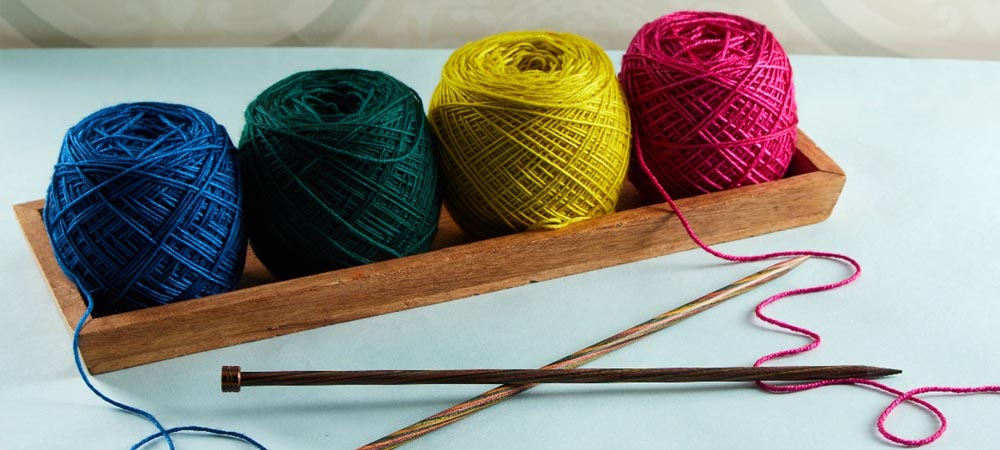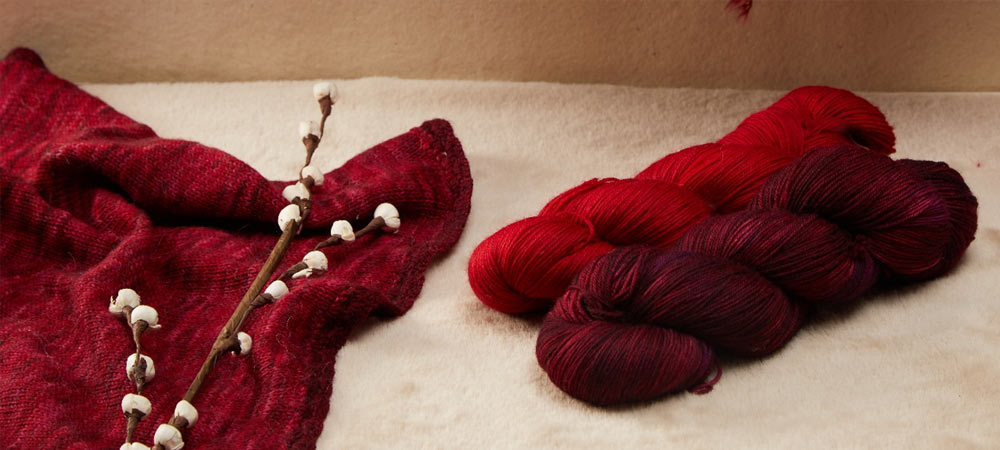Mastering Double Knitting: Essential Tips for Beginners
- Blog Views : 1447
- Symfonie Yarns
- 29Jan, 2024

Have you ever marveled at scarves or potholders with intricate reversible colorwork, with no visible floats or tails on the backside? If you're eager to learn the art of double knitting, you're in the right place. This comprehensive guide will take you through the step-by-step instructions for this simple yet mesmerizing technique, and with Symfonie Yarns’ premium DK weight merino yarn, you’ll be knitting wonders in no time!
Getting Started with Double Knitting
Double knitting involves knitting techniques that produce two fabrics simultaneously, either interlocked or fully separable. With Symfonie Yarn’s DK wool in vibrant shades, it's an ideal method for beginners to try out. Additionally, the resulting fabric is double in thickness, making it perfect for winter garments and keeping you cozy in the chilly weather. We recommend using Luna in shades Moonlight and Blue Sapphire for a stunning piece that feels like feathers on your skin. You can also consider a knitting thimble for even tension.
Casting On:
- Form a slip knot with both strands. But make sure to not count this slip knot; it will be unraveled later.
- Leave a short tail for weaving in later on.
- Wrap both strands around your fingers, just like a longtail cast-on.
- For the right side, wrap the yarn around your thumb (assuming you start on the right side in the first row).
- Go underneath the yarn from your thumb (underneath the strand, not through the loop around your thumb).
- From above, grab the yarn going towards your index finger. Pull this yarn through, tightening it by spreading your fingers.
- Go around the yarn towards your index finger from above. Similarly, go around the yarn towards your thumb from above.
- Pull the yarn through and tighten it up by spreading your fingers.
- Repeat these steps until the required number of stitches is cast on. And remember, always cast on in pairs!

Working the Rows:
As you turn your work to knit the first row, maintain a gentle tension on both strands to prevent accidentally unraveling the first stitch.
- When reaching the slip knot at the row's end, slip it off the needle without knitting. This step is important for creating an invisible edge, adding that seamless magic to your project.
- Now turn your work around. Pick up both strands of yarn and bring them to the back of your work, ready for the next row’s adventure.
- Knit the first stitch as usual but use only color A. Keep color B in the back, tensioned around your finger.
- Bring both strands to the front of your work. Purl one stitch using color B exclusively, letting color A stay in front of the work.
- Bring both strands to the back again and follow the same steps until you're close to the last two stitches of the row.
- Slip the second-to-last stitch purlwise with both strands in the back. Bring the yarns to the front, slipping the last stitch purlwise as well.
- Now it’s time to turn your work around again. Bring the yarns to the back (if not there already) and knit the first stitch through the back loop using color A.
- Twist the yarns around each other, preventing your work from falling apart at the edges.
- Bring both yarns to the front again and purl the next stitch using color B. This step traps color A between the layers, adding depth and dimension to your fabric.
- Continue these steps until you achieve the desired length, and enjoy the rhythmic dance of Symfonie Yarns’ magical merino silk.
Invisible Edge Tip: If you've used the invisible cast-on method, consider knitting all stitches through the back loop in the first row to untwist them, providing an extra invisible edge if needed. This step is especially useful if you notice your stitches are mounted the wrong way.
Changing Colors in Double Knitting:
One of the wonders of double knitting lies in its ability to bring virtually any two-colored picture to life. Once you've mastered the basics, this becomes a breeze. Keep in mind that double knitting charts and patterns commonly treat stitches in pairs. For instance, if you knit the first stitch in color A for the front side, you'll purl the second stitch in color B.
- Knit up to the point where you wish to change colors. Make sure the next stitch is a knit stitch.
- Bring both yarns to the back in the usual way and simply knit the next stitch in a different color.
- Bring both yarns to the front as you normally would. Purl the next stitch with the other color.
That's all there is to it! Just a seamless switch of colors. This creates a beautiful interlocking effect between the front and back, forming a singular unit of both colors. Whether you knit one stitch or 20 in a different color, the choice is yours.
Binding Off:
Choose one color and bind off the regular way. Or you could use both main strands and bind off within the pattern. Whichever way seems fit!
Experiment with different patterns and color combinations, using Symfonie Yarns to bring perfection your creations where every stitch tells a story on both sides of the fabric. And have a joyful time knitting!
-
- 02 Dec,2025
-
- 27 Nov,2025
-
- 24 Nov,2025
-
- 19 Nov,2025
-
- 17 Nov,2025
-
- 10 Nov,2025
Copyright © Symfonie Yarns 2025 - all rights reserved | RSS Feed
